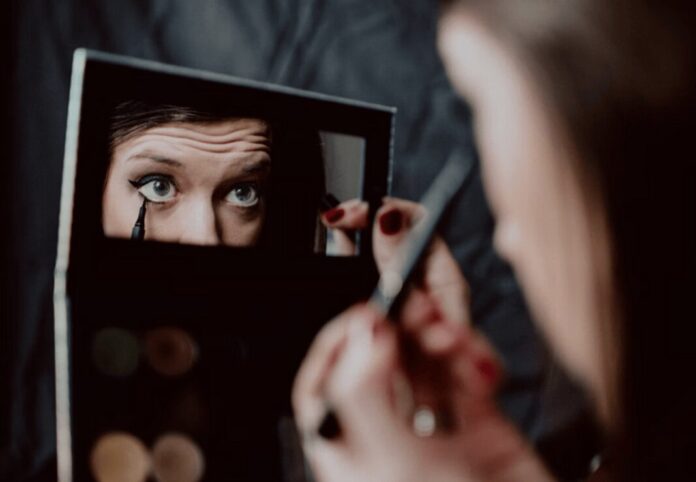What Does It Mean When Your Makeup is Flaky?
Makeup is an essential part of many people’s daily routines, helping to enhance features and boost confidence. But nothing can ruin a carefully applied look faster than makeup that starts to flake. If you’ve ever wondered, “What does it mean when your makeup is flaky?”—you’re not alone. Flaky makeup is a common problem, and understanding its causes and solutions is key to ensuring your makeup looks flawless throughout the day.
In this comprehensive guide, we will explore everything you need to know about flaky makeup: why it happens, how to prevent it, and what you can do to fix it when it strikes. By the end of this article, you’ll have the tools to maintain smooth, long-lasting makeup no matter your skin type or the weather conditions.
Table of Contents
- What Does Flaky Makeup Mean?
- Common Causes of Flaky Makeup
- 2.1 Dry Skin
- 2.2 Dehydration
- 2.3 Poor Skin Preparation
- 2.4 Using the Wrong Products
- 2.5 Over-Application of Makeup
- 2.6 Environmental Factors
- How to Prevent Makeup from Becoming Flaky
- 3.1 Proper Skin Hydration
- 3.2 Exfoliation Techniques
- 3.3 Moisturizing Correctly
- 3.4 Using Primers Effectively
- 3.5 Choosing the Right Foundation
- 3.6 The Role of Setting Sprays
- How to Fix Flaky Makeup on the Go
- 4.1 Hydrating Mists
- 4.2 Gentle Blotting and Buffing
- 4.3 Reapplying in Layers
- Flaky Makeup for Different Skin Types
- 5.1 Makeup Tips for Dry Skin
- 5.2 Makeup Tips for Oily Skin
- 5.3 Makeup Tips for Combination Skin
- Best Products to Combat Flaky Makeup
- 6.1 Hydrating Foundations
- 6.2 Moisturizing Primers
- 6.3 Dewy Setting Sprays
- FAQs
- 7.1 Why does my foundation look flaky?
- 7.2 Can oily skin get flaky makeup?
- 7.3 How do I stop my makeup from flaking in the winter?
- 7.4 What ingredients should I avoid to prevent flaky makeup?
- 7.5 Should I exfoliate before applying makeup?
- 7.6 How do I fix my makeup if it’s already flaky?
8. Conclusion
1. What Does Flaky Makeup Mean?
Flaky makeup refers to a patchy, uneven texture on your skin where foundation, concealer, or powder appears to lift, crack, or separate from the surface. This results in visible lines or rough patches on the skin, giving an undesirable “cakey” look. Flakiness can happen soon after makeup application or develop over time as your skin loses moisture throughout the day.
This issue is particularly noticeable in areas of the face prone to dryness, such as around the nose, chin, and under the eyes. But what causes flaky makeup, and how can you avoid it? The answer lies in your skin’s hydration levels, preparation, and product choices.
2. Common Causes of Flaky Makeup
There are multiple reasons your makeup might start to flake. Some are related to the condition of your skin, while others are due to the types of products you use or how you apply them. Let’s take a deeper dive into these causes.
2.1 Dry Skin
The most common culprit behind flaky makeup is dry skin. When your skin lacks sufficient moisture, it can become rough and textured, which makes it harder for makeup to adhere evenly. As your makeup dries along with your skin, it begins to crack and flake, revealing uneven patches underneath.
2.2 Dehydration
Dehydration can also make your makeup appear flaky. When your body is dehydrated, your skin loses its natural moisture barrier, leading to dryness. This condition can make the skin under your makeup appear dull and cause your foundation to separate or cling to dry patches. Inadequate water intake or environmental factors like dry air can exacerbate this.
2.3 Poor Skin Preparation
Skipping proper skincare steps before applying makeup is another key factor in flaky makeup. Neglecting exfoliation or not using a moisturizer can leave dead skin cells and dry patches on your skin, creating a bumpy, uneven surface. Makeup applied over this will not blend well, leading to patchy, flaky areas.
2.4 Using the Wrong Products
Certain products, especially foundations or powders, are not suitable for every skin type. Matte foundations, for example, can enhance dry patches on dry or combination skin types. Heavy powders can absorb moisture from the skin, leaving it looking flaky, especially after a few hours of wear.
2.5 Over-Application of Makeup
Applying too many layers of foundation, concealer, or powder can cause makeup to build up and crack over time. If your skin is already dry or not well-prepped, too much product will settle into fine lines or cling to dry areas, creating a cakey, flaky appearance.
2.6 Environmental Factors
Environmental factors, such as cold, windy weather or excessive sun exposure, can strip moisture from your skin. If your skin becomes too dry, it can cause your makeup to look flaky. Low humidity and indoor heating can further dry out your skin, especially in winter months, causing your makeup to appear less smooth and fresh.
3. How to Prevent Makeup from Becoming Flaky
While flaky makeup can be frustrating, there are several steps you can take to prevent it from happening. Proper skincare, product choices, and application techniques all play a role in ensuring smooth, long-lasting makeup.
3.1 Proper Skin Hydration
Hydration is the foundation of good makeup. Start by drinking enough water throughout the day to keep your skin hydrated from within. Additionally, use hydrating serums or creams that help lock in moisture, especially during colder months when skin is prone to drying out. Look for products containing hyaluronic acid, glycerin, or ceramides, which are excellent for maintaining moisture levels.
3.2 Exfoliation Techniques
Regular exfoliation is essential to prevent flaky makeup. By removing dead skin cells, you create a smooth surface for your makeup to adhere to. However, be cautious not to over-exfoliate, as this can strip the skin’s natural oils and worsen dryness. Stick to gentle exfoliators, such as those containing lactic or glycolic acid, once or twice a week, depending on your skin type.
3.3 Moisturizing Correctly
Before applying any makeup, make sure your skin is well-moisturized. Choose a moisturizer suited to your skin type—lightweight for oily skin, and richer creams for dry skin. Allow your moisturizer to fully absorb before moving on to makeup application, ensuring that your skin is supple and well-hydrated.
3.4 Using Primers Effectively
A primer creates a smooth base for makeup, helping it to adhere better and last longer. Hydrating primers are ideal for dry or combination skin, as they help to plump and smooth the skin’s surface, preventing makeup from settling into dry patches. If your skin is oily, opt for a lightweight or mattifying primer that balances oil production without drying out your skin.
3.5 Choosing the Right Foundation
Your foundation should complement your skin type and concerns. For dry skin, opt for hydrating foundations with a dewy or satin finish, as these will give a glow and help minimize the appearance of dry patches. Avoid heavy matte foundations, which can exacerbate dryness. For oily skin, choose lightweight, oil-free foundations to control shine without drying the skin.
3.6 The Role of Setting Sprays
A setting spray can lock in your makeup and provide a protective layer that keeps your skin hydrated. Dewy or hydrating setting sprays work particularly well for dry or flaky skin, while matte-finish sprays can help control shine for oily skin without causing flakiness.
4. How to Fix Flaky Makeup on the Go
Even with the best preparation, your makeup may sometimes still flake throughout the day. If you find yourself in this situation, there are a few quick fixes to get your makeup back on track.
4.1 Hydrating Mists
A hydrating mist or facial spray is a lifesaver for flaky makeup. Simply spritz your face lightly to add moisture without disturbing your makeup. Look for mists with ingredients like rose water, aloe vera, or hyaluronic acid to soothe dry skin and refresh your look.
4.2 Gentle Blotting and Buffing
If you notice small areas of flakiness, gently blot the area with a soft tissue or makeup sponge to remove excess product. Then, use a clean brush or sponge to buff the makeup into the skin, blending out any visible flakes.
4.3 Reapplying in Layers
If the flakiness is more widespread, reapply a small amount of moisturizer or hydrating primer to the affected areas and let it absorb. Then, apply a light layer of foundation or concealer over the top, blending carefully to avoid further buildup.
5. Flaky Makeup for Different Skin Types
Different skin types require tailored approaches to prevent flaky makeup. Let’s explore the best practices for dry, oily, and combination skin types.
5.1 Makeup Tips for Dry Skin
For dry skin, focus on
hydration at every stage of your makeup routine. Use a rich moisturizer and a hydrating primer to prepare the skin. Opt for cream or liquid foundations with hydrating ingredients, and avoid powders or matte products that can further dry out your skin. Dewy setting sprays can also help keep your makeup looking fresh throughout the day.
5.2 Makeup Tips for Oily Skin
Oily skin can still experience flakiness if it becomes dehydrated or if the wrong products are used. Choose oil-free moisturizers and lightweight, oil-control primers to balance your skin. Avoid heavy, matte foundations, as they can cause dehydration over time. A balancing setting spray can help control oil without drying out your skin.
5.3 Makeup Tips for Combination Skin
For combination skin, focus on using different products for different areas of your face. Use a hydrating primer on the drier areas (like cheeks), and an oil-control primer on the oilier areas (like the T-zone). Choose a lightweight, buildable foundation to avoid heavy coverage that can cause flakiness in dry areas. Balancing setting sprays can help lock in your look without emphasizing dry patches.
6. Best Products to Combat Flaky Makeup
The right products can make a huge difference when it comes to preventing flaky makeup. Here are some top recommendations for hydrating, long-lasting makeup products.
6.1 Hydrating Foundations
- NARS Sheer Glow Foundation: Offers buildable coverage with a radiant finish, perfect for dry or combination skin.
- IT Cosmetics Your Skin But Better CC+ Cream: Provides full coverage while delivering hydration and sun protection.
- Dior Forever Skin Glow: A hydrating, long-wear foundation that leaves a luminous finish.
6.2 Moisturizing Primers
- Smashbox Photo Finish Primerizer: Combines a primer and moisturizer in one for a hydrating base.
- Too Faced Hangover Replenishing Face Primer: Infused with coconut water, this primer provides a burst of hydration.
- Bobbi Brown Vitamin Enriched Face Base: A rich, nourishing primer that doubles as a moisturizer.
6.3 Dewy Setting Sprays
- MAC Prep + Prime Fix+: A cult-favorite setting spray that hydrates and refreshes makeup.
- Tatcha Luminous Dewy Skin Mist: Adds a dewy glow to the skin while providing moisture.
- Morphe Continuous Setting Mist: Lightweight and hydrating, perfect for setting makeup without drying the skin.
7. FAQs
7.1 Why does my foundation look flaky?
Flaky foundation is often caused by dry skin, dehydration, or improper skin preparation. Ensuring your skin is well-hydrated and using the right products for your skin type can help prevent this issue.
7.2 Can oily skin get flaky makeup?
Yes, even oily skin can experience flaky makeup, especially if it is dehydrated or if the wrong products are used. It’s important to balance hydration with oil control for the best results.
7.3 How do I stop my makeup from flaking in the winter?
To prevent makeup from flaking in the winter, focus on hydration by using rich moisturizers, hydrating primers, and dewy foundations. Avoid powders and use setting sprays to lock in moisture.
7.4 What ingredients should I avoid to prevent flaky makeup?
Avoid products with high levels of alcohol or mattifying ingredients that can dry out the skin. Opt for hydrating ingredients like hyaluronic acid and glycerin instead.
7.5 Should I exfoliate before applying makeup?
Yes, gentle exfoliation helps remove dead skin cells, creating a smooth surface for makeup application. However, avoid over-exfoliating as this can irritate and dry out the skin.
7.6 How do I fix my makeup if it’s already flaky?
If your makeup is already flaky, try using a hydrating mist or reapplying a small amount of moisturizer before gently buffing the affected areas. Reapply foundation in thin layers if necessary.
8. Conclusion
Flaky makeup can be frustrating, but with the right skincare routine, products, and techniques, it’s possible to achieve a smooth, long-lasting finish. Focus on hydration, use gentle exfoliation, and choose the right products for your skin type to prevent flakiness. When flakiness does occur, quick fixes like hydrating mists and gentle blotting can help restore your makeup throughout the day. By understanding the causes and solutions to flaky makeup, you’ll be well on your way to maintaining a flawless look all day long



